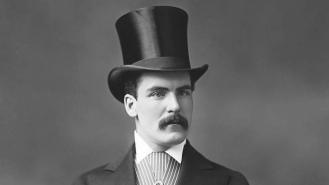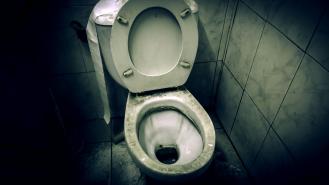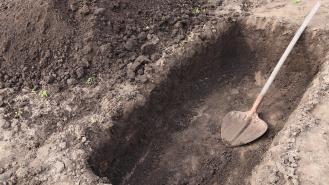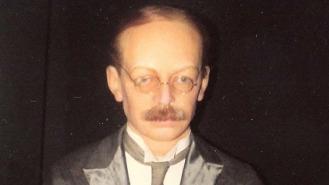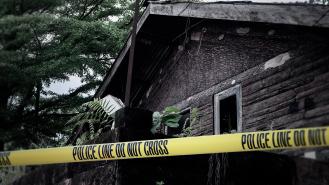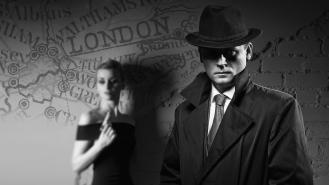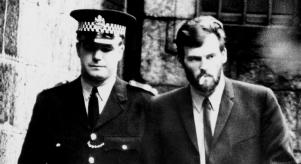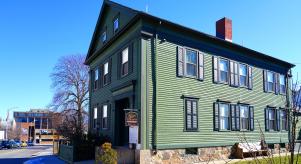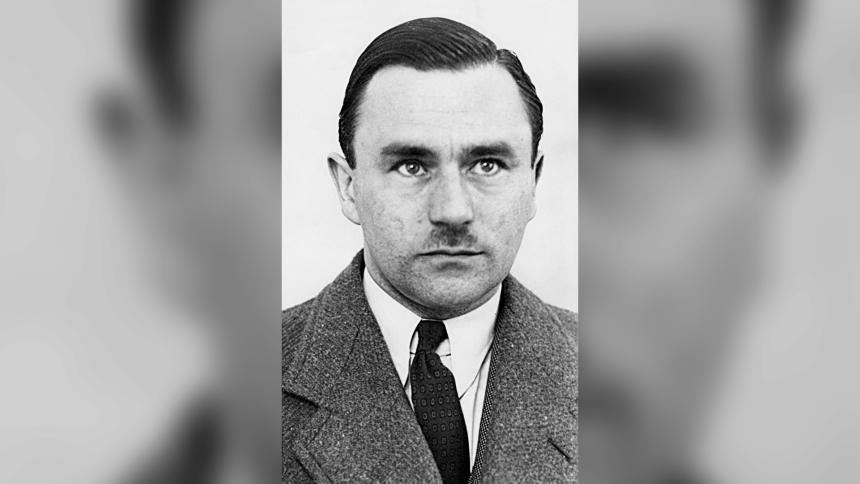
The Acid Bath Murderer: The chilling crimes of John Haigh
The dispassionate way that John Haigh, one of Britain’s most notorious serial killers, disposed of his victims’ bodies in barrels of acid presents a disturbing portrait of a sociopath who was shaped by his strict and puritanical upbringing as a child.
The perfect crime
John Haigh brutally killed nine people in what became known as the Acid Bath Murders. His spree took place from 1944 to 1949 before he was arrested and tried at Lewes Assizes in East Sussex. What marks Haigh’s crimes as extraordinarily macabre is the way he went about planning how to dispose of the bodies in order to commit ‘undetectable’ crimes. Haigh believed that without evidence of human remains, there would be no crime to investigate.
Having spent time in prison for fraud, Haigh’s habitual con man activity involving creating fictitious characters to carry out scams, took a sinister turn when he was released in 1943. Prison did not affect his compulsive criminal behaviour and after 14 months of incarceration, he vowed never to be caught again. After experimenting with sulphuric acid dissolving dead field mice, Haigh realised that he may have the perfect solution to eradicate any trace of a human body.
Envy leads to planned murder
Haigh’s first murder involving this gruesome end was of former employer William McSwan who introduced Haigh to his parents and suggested he take on the role of rent collector for their London properties. Haigh became envious of his lifestyle and saw an opportunity to misappropriate the McSwan family assets for himself.
Luring William to his workplace basement on Gloucester Road in London, Haigh viciously hit him over the head with a lead pipe. With some difficulty, Haigh stuffed the man’s body into a 40-gallon oil drum containing sulphuric acid. It took two days for the body to completely dissolve before he emptied the drum’s horrific contents down a manhole.
Pretending that William had gone into hiding in Scotland to avoid National Service, Haigh continued to collect rents for William’s parents, William Sr. and Amy, before stealing their pension cheques and selling their properties for his own gain.
The McSwans were Haigh’s next victims. He pretended that their son had returned and was waiting to surprise them at the Gloucester Road basement. However, on 2nd July 1945, they were callously murdered by being bludgeoned and shot. Their remains were also dissolved and disposed of down a drain.
Wealthy prey for robbing
Haigh’s sociopathic compulsion to murder was driven by his desperate need for money. His habitual gambling and delusions of living a life that exceeded his means left him in debt. Unlike murders committed in anger or passion, Haigh factored in strategy in his campaign of death where he was unencumbered by conscience or any sense of morality. In his twisted, omnipotent view of the world, he was superior to other people who meant nothing to him.
By the summer of 1947 when he was running short of money, Haigh found another couple to befriend, kill and steal from. Dr Archibald Henderson and his wife Rose were hoodwinked by Haigh who faked interest in a house they were selling. Haigh by now rented a workshop in Crawley, West Sussex, where he invited Archibald on the pretext of business. After shooting him dead, Haigh left the body in a storeroom before luring Rose to the same location and fate. He dissolved both bodies but failed to erase all traces such as the remains of Archibald’s left foot.
Haigh was starting to believe that he was invincible which led to him becoming careless. Instead of disposing of the remains down a manhole, he chose to dump them in the corner of his yard instead.
The unsuspecting girlfriend
Haigh’s stylish girlfriend, Barbara Stephens, was only 20 years old at his trial in 1949. It is believed that Haigh, who was in his mid-30s when he first met the then-teenager, had compartmentalised his life, keeping his dark murderous side out of sight of their relationship.
While continuing his killing spree, Haigh claimed his car had been stolen. The vehicle was found at the foot of a cliff where, a month later, an unidentified body was discovered. The police did not link the two events, but Barbara became suspicious of him when he told her he wanted to collect the car insurance.
Several potential victims managed to survive after Haigh failed to lure them to his Crawley murder den. As an indication of his sociopathy, Haigh also planned on killing the mother of a deceased school friend after recognising their name in the local obituaries.
Profile of a psychopath
Haigh presented a unique state of mental ill health to criminal psychiatrists, one which suggested an unhealthy childhood without friendships. During his arrest, Haigh attested to suffering from a psychological and emotional need to drink blood which is why he killed. The confession earned him the moniker ‘The Vampire of Kensington’ but it did not explain his tendency to exploit his victims’ financial holdings and properties. In fact, the psychiatric examiner did not believe he suffered from a ‘blood lust’ compulsion, which allegedly started after a car accident.
Haigh had also asked a detective about the chances of release from a high-security psychiatric hospital such as Broadmoor, which implied his ‘bloodlust’ psychosis was a fabrication to make him appear insane. But what is undisputed is his strange and disturbing childhood where he was brought up in a strict and oppressive environment.
His parents were members of a fanatical group of religious people known as ‘The Peculiar People’ or ‘The Plymouth Brethren’, who were pious, anti-clerical and kept themselves at a distance from society. Haigh was forbidden to have friends or enjoy any form of entertainment apart from reading and listening to Bible stories.
His father erected a tall fence around the family home to isolate them from the outside world and told young Haigh that a blue mark on his own head was the result of his sinning. Haigh is believed to have developed anxiety over getting a similar mark showing him to be a sinner. It wasn’t until after he committed pranks and saw no such mark appearing that he realised he had been deceived.
Physicians believe that this may have been the turning point for his sociopathic development and an egocentric belief that he could get away with things without suffering consequences.
Final victim
69-year-old widow Olive Durand-Deacon was Haigh’s last victim. Because Haigh posed as an engineer, Olive was keen to share an invention idea she had about artificial fingernails. Her fate was sealed when she entered Haigh’s Leopold Road workshop in southwest London on 18th February 1949. He shot her in the back of the neck and placed her lifeless body in acid. Haigh’s killing spree soon came to an end when police started to investigate Olive’s disappearance which led to them unearthing his history of theft and fraud. Ironically, Haigh had drawn attention to himself by initially reporting Olive as missing believing that this would make him look like a concerned friend.
Workshop of horror
Investigators became suspicious of Haigh as a middle-aged man staying at the Onslow Court Hotel amongst wealthy older women. Once the police were informed of his history in prison for forgery and obtaining money by false pretences, they decided to search his workshop business in Crawley.
Forcing their way into the building, the police discovered a gas mask, a new stirrup pump, one rubber apron, a pair of rubber boots and gloves and three 10-gallon glass bottles used for holding acid. Papers relating to some of his victims were part of a cache of incriminating evidence as well as a .38 calibre revolver and ammunition in a hatbox. However, the police still had no idea where the missing victims had gone.
After Haigh was arrested, the forensics team discovered 28lbs (13kg) of body fat, 18 fragments of human bone, a segment of Olive’s dentures, part of a foot and the handle of a plastic bag.
Investigation: Proving pre-meditation
Before the trial began on 18th July 1949, Haigh already thought of a strategy to get him off a multiple murder charge by convincing the court that he was insane and not responsible for his actions. Haigh envisaged receiving 10 years incarceration in a mental institution and then regaining his freedom.
Barrister E. G. Robey for the prosecution called 33 witnesses to prove premeditation of murder for gain and presented a chronological timeline of Haigh’s movements to show that the accused was rational in the way he approached, groomed and then killed his victims. The fact that Haigh procured equipment for the use of sulphuric acid on a large scale indicated that a plan to dispose of evidence was already in play. Because most of the victims were presently unidentifiable, the prosecution case focused on the murder of Olive.
The timeline revealed Haigh was in debt and had an outstanding hotel bill while he was meeting Olive to discuss a business proposition. He also borrowed 50 pounds to order 10 gallons of acid. Olive had been observed by a witness wearing a Persian lamb coat while driving away with Haigh in his car. During a police search, a receipt for cleaning the Persian lamb coat was found in Haigh’s possession.
Together with forensic evidence that included bloodstains and human fat, the addition of papers relating to missing victims and the revolver resulted in Haigh being formally charged with murder.
Trial and immortality in wax
As Haigh was convinced he could persuade the jury of his ‘insanity’ he decided to write a detailed confession and increased his victim count from six to nine. However, none of the psychiatrists assigned to the case for both defence and prosecution believed that he was incapable of understanding his actions. The fact that Haigh had enquired about his chances of leaving a mental institute indicated he was a calculating killer. It took the jury just 15 minutes to find him guilty.
Before Haigh’s execution was carried out, he was assessed by two more medical officials to be certain that he was sane. While waiting for his fate in prison, Haigh finished his exclusive story for the News of the World paper which had paid for his defence team. He also wrote letters to his parents and girlfriend who had continued to visit him in prison.
On 10th August 1949, Haigh was hanged at Wandsworth Prison. He bequeathed his best suit to Madame Tussaud’s Chamber of Horrors for a wax figure of himself with instructions that it must be kept immaculate.
